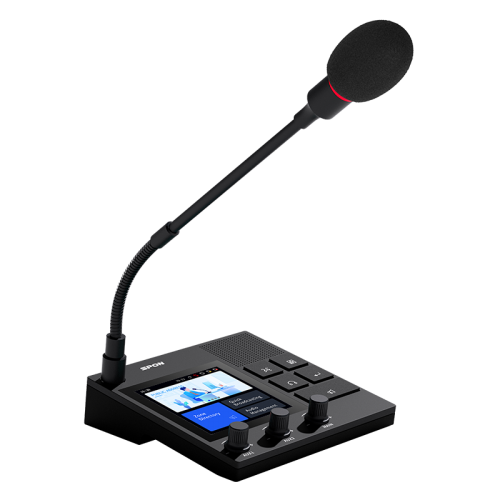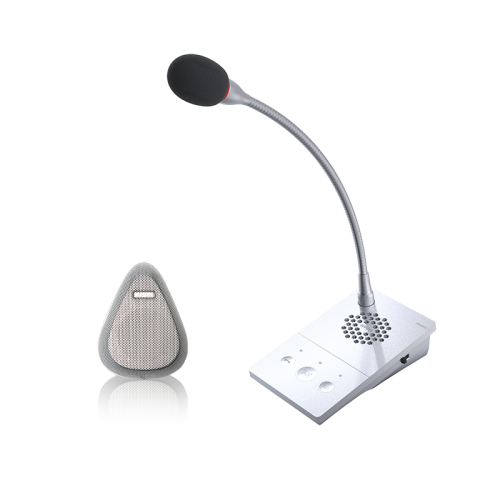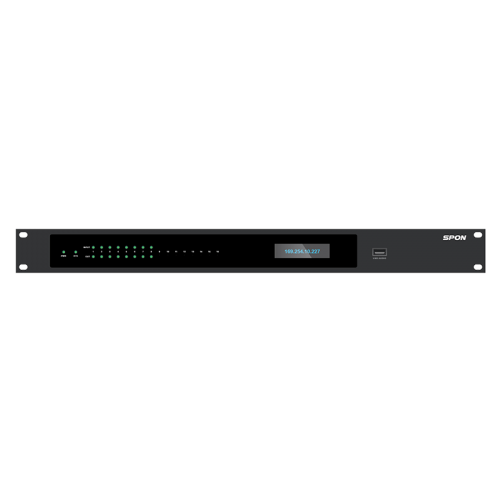The Ultimate Overview to Establishing Your IP PA System Successfully
The Ultimate Overview to Establishing Your IP PA System Successfully
Blog Article
Comprehensive Guide to Public Address Solutions
Public address (PA) systems are generally encountered in different projects such as office complex, domestic complicateds, commercial workplace buildings, schools, healthcare facilities, train terminals, airport terminals, bus manufacturing facilities, banks, and terminals - IP Paging Microphone. This guide will certainly provide a thorough review of PA systems

Components of a System
No matter the kind of PA system, it usually contains four primary parts: resource equipment, signal boosting and handling tools, transmission lines, and speaker systems.
Source Devices
Music Gamers: Used for background music.
Microphones: Includes conventional microphones and zone-select microphones.
Voice Storage Space Tools: For saving business and emergency situation broadcast messages.
Signal Processing and Amplification Equipment
Sound Signal Cpu: Takes care of audio signal payment, depletion, equalization, and so on.
Pre-Amplifier: Pre-amplifies audio signals.
Power Amplifier: Magnifies audio signals to drive audio speakers, supplying continuous voltage output.
Transmission Lines
The solution management system software application allows the tracking center to exert centralized administration over the broadcast and intercom interaction systems. It promotes live tool standing monitoring, fault diagnosis, and troubleshooting, strengthening system dependability and uniformity.
Audio speakers
Ceiling Audio Speakers: Indoor, flush-mounted in the ceiling, continuous voltage or continuous resistance.
Wall-Mounted Audio speakers: Wall-mounted, consistent voltage or continuous resistance.
Column Audio Speakers: Free-standing, appropriate for outside or interior usage.
Horn Speakers: High sensitivity, suitable for indoor or outside usage.
Concealed Speakers: For exterior settings like parks or gardens, developed to look like rocks, mushrooms, or stumps.
Audio Technical Specifications of PA Systems
In daily atmospheres, normal sound stress degrees are:.
• Workplace sound: 50-60 dB.
• Normal conversation: 65-70 dB.
• Textile manufacturing facility sound: 110-120 dB.
• Small caliber shooting: 130-140 dB.
• Large jet aircraft noise: 150-160 dB.
Signal-to-Noise Ratio (SNR)
SNR measures the ratio of the signal voltage to noise voltage, expressed in decibels. A higher SNR suggests much less sound and much better audio top quality. Typically, SNR must go to the very least 63 dB, with high-fidelity speakers reaching over 110 dB.
Input Level of sensitivity
This is the minimum input voltage required to achieve the rated result power. Higher level of sensitivity means less input signal is required. Generally, power amplifiers have an input level of sensitivity of 0.775 V (0 dB) to 1.5 V (+6 dB).
Maximum Outcome Power (Audio Speakers)
The optimal power an audio speaker can take care of basically ruptureds without damages.
Rated Power (Audio Speakers)
.
The continuous power an audio speaker can take care of without distortion, determined in watts (W) Ranked power is a typical value, and speakers can take care of peak power approximately 2-3 times the rated power.
Constant Voltage vs. Continuous Insusceptibility Outputs
Constant Voltage (70V or 100V)
Uses voltage to drive audio speakers, allowing longer transmission distances and numerous speakers in parallel. Audio top quality is slightly substandard compared to consistent resistance systems.
Power amplifiers should match the voltage score of the audio speakers to prevent damage.
Continuous Insusceptibility.
Utilizes present to drive speakers, giving far better sound high quality yet restricted transmission range (up to 100 meters)
Impedance matching is crucial; for instance, an 8Ω amplifier must be matched with 8Ω speakers.
Choose and Configuring Audio Speakers
Audio speaker Choice
Indoor Spaces with Ceiling: Usage flush-mounted ceiling audio speakers without a rear cover.
Indoor Spaces with Only a Framework: Usage ceiling audio speakers with rear covers or hanging ball-type audio speakers.
Outside Locations: Use weatherproof column audio speakers or horn speakers.
Parks and Gardens: Use camouflaged audio speakers made for aesthetic purposes.
High-End Interiors: Usage elegant hanging audio speakers.
Fire-Safe Locations: Use fire-resistant speakers with closed layouts.
Audio speaker Arrangement
Audio speakers ought to be dispersed equally throughout the solution location to ensure a signal-to-noise ratio of at the very least 15 dB. Normal background noise levels and suggested speaker positioning are:.
Premium workplace passages: 48-52 dB.
Huge shopping malls: 58-63 dB.
Active road locations: 70-75 dB.
Speakers ought to be placed to make sure an audio pressure degree of 80-85 dB in many settings. Ceiling speakers must be spaced 5-8 meters apart, or 8-12 meters for background music just. For emergency broadcasts, ensure that no location is greater than 15 meters from the nearby speaker.
Amplifier Sizing
Calculation Method:
For service and organization PA systems: P= K1 × K2 × ΣPo where:.
P = Total amplifier result power (W)
K1 = Line loss settlement factor.
K2 = Aging element (1.2-1.4)
ΣPo = Overall power need.
For fire alarm system systems, make use of 1.5 times the overall number of speakers.
Example Estimation:
For a background music system with 10 audio speakers at 20W each: P= 1.26 × 1.2 × 10 × 20W × 0.7= 211W.
Final amplifier ability should be 1.3 times this value: 211W × 1.3= 274W
Installation Demands
Speaker Positioning
Speakers must be equally and strategically dispersed to satisfy protection and sound top quality demands
Power Supply
Tiny PA systems can make use of routine power outlets, while systems over 500W need a committed power supply. Power must be steady, with automatic voltage regulatory authorities if essential. The power supply ought to be 1.5-2 times the devices's power consumption
Cable Television and Channel Installation
Usage copper-core cables for signal transmission. Cable televisions need to be shielded and routed via suitable conduits, avoiding interference from electrical lines. Ensure proper splitting up in between power and signal lines.
Lightning Defense and Grounding
PA systems require proper grounding to avoid damages from lightning and electrical disturbance. Usage devoted basing for equipment and ensure all basing actions satisfy safety standards
Installation Quality
Cable Television and Port Quality
Use premium cables and adapters. Make certain connections are safe and secure and appropriately matched to prevent signal loss or disturbance.
Audio speaker Links
Keep appropriate stage positioning between speakers. Use trusted methods for attaching cables, such as incurable or soldering blocks, and protect connections from environmental damage.
Grounding and Security Checks
Validate all grounding is properly set up and IP Paging System examine the security of power connections and tools setups. Do detailed inspections prior to finalizing the setup.
Checking and Change
Evaluate the whole system to guarantee all components work appropriately and satisfy style requirements. Change setups as required for optimum efficiency.
Craftsmanship Demands for Public Address Solutions
Construction Top Quality Requirements
The quality of building in a public address (PA) system project is critical to fulfilling style specs and individual requirements. It is crucial to purely follow the layout strategies, adhere to standards, avoid rework and hold-ups, and maintain thorough building logs. Key areas to concentrate on include:
Cord Option and Setup
During the construction of a PA system, interest is commonly concentrated on equipment, however the option of transmission cords is likewise essential for accomplishing acceptable sound quality. Top notch broadcasting equipment (amplifiers, speakers, etc) is essential, however the quality of the transmission cords also impacts sound high quality.
Identical speaker wires have fundamental capacitance between the cables, which is not appropriate for long-distance transmission as it can undermine high regularities and trigger uncertain or smothered high sounds. Twisted set cords can effectively conquer this problem and ought to be utilized for long-distance transmission.
Secured twisted set cords stop electromagnetic disturbance and improve wire sturdiness, making them suitable for long-distance installations. Thicker wires decrease transmission loss yet boost expense and installment problem.
Use balanced connections for all signal links in between PA system devices, with firm endpoints.
For systems with fire alarm functions, use flame-retardant or fireproof copper-core cable televisions.
Cable televisions ought to be transmitted with steel conduits or cable television trays, and need to not share trays with lights or power lines. When splicing is essential, make use of specialized adapters and leave appropriate wire size at both ends with clear permanent markings.

Attaching Audio Speakers and Program Lines
When attaching audio tools, it's important to ensure stage consistency between audio speakers and broadcast lines. Stage disturbance in between audio speakers can trigger significant variations in sound stress degrees, bring about unequal sound distribution. As a result, stick purely to circuitry tags and standardized link techniques
.
3 common link methods in PA systems are:.
Twisting Approach: Stripping insulation from cables, turning them together, and safeguarding them with tape or clamps. This technique is easy yet may deteriorate over time.
Screw Terminal Technique: Removing insulation and putting cables right into screw terminals, then tightening up the screws. This technique is frequently utilized.
Soldering Method: Stripping insulation, twisting cords, and soldering them together, then covering with tape. This approach is a lot more suitable and trustworthy for high-demand or moist atmospheres.
Despite the method, usage tinned cord to help with soldering and stop rust. Use PVC or metal conduit to safeguard exposed cords from junction boxes to audio speakers.
System Grounding
To reduce interference from the power system, separate safety and operational groundings must be developed. Advised technique is to mount different copper strips for weak and strong electric systems in their respective vertical shafts.
The overall grounding resistance must not surpass 1Ω.
Building Assessment
Because of the complexity of PA systems with countless links and elements, thorough assessment is required. General inspections must consist of:
Safety and security checks of devices installation.
Verification of high-voltage line arrangements (SPON Communications).
Accuracy of connections and terminations
Unique attention needs to be offered to gadget setups, such as resistance matching switches on audio speakers. Confirm that buttons are established correctly to avoid damages. Inspect the result selection turns on signal source tools, settings on signal handling devices, amplifier bridging buttons, and power supply settings.
As soon as these actions are validated, plan for tools debugging. Since debugging approaches vary based upon certain job demands, they are not covered thoroughly right here.
Top quality Records
Certificates, technical specs, and paperwork for audio speakers, rooms, transformers, controllers, outlets, amplifiers, audio processing devices, secured cables, etc.
Pre-installation, concealed assessment, self-inspection, and shared evaluation records.
Records of layout modifications and last drawings - IP Speaker.
Quality assessment and examination documents for channel and wire setup
Records of PA system installment and debugging.
Major Setup Needs
Tools Installation Order
Place frequently used devices like the primary program controller at the top for easy accessibility. For even more complicated systems with a 2.0-meter closet, position regularly used devices in between 0.8 to 1.5 meters for ease.
Equipment Link Order
The mixer outputs are distributed to each amplifier, and if utilizing pure power amplifiers, link to the INPUT audio input. Amplifier outcomes after that link to addressable terminals, area control boxes, or area selectors, and lastly to the audio speakers.
Circuitry Factors to consider
For considerable wiring, separate audio and power lines using different makers' cords can assist stay clear of complication. Strategy electrical wiring beforehand to avoid missing cords, which would require redesigning the whole setup.
Power Supply
Make use of a devoted power sequencer for PA systems to guarantee uniform power management and regular tool start-up sequences. The major power supply should consist of a ground line to secure devices and prevent static-related risks
Equipment Option
Do not depend entirely on appearance; consider customer evaluations and market reputation. Products from credible makers with comprehensive screening and experience are typically much more dependable
Wireless Microphones
For wireless microphones, select UHF designs for better array and signal stability. For mobile use, choose headset microphones.
Connection Cable televisions
Use strong connections for long life and avoid counting on adapters, which can trigger loose connections gradually. Properly solder connections to guarantee longevity and ease of maintenance.
Cupboard Installment
If using deep power amplifiers, ensure the cabinet measurements (e.g., 600x600mm) are compatible with the devices. Step closet deepness and spacing before setup.
Proper planning, top notch equipment, and meticulous installment and upkeep are vital to achieving optimal audio quality and trustworthy efficiency in a PA system.

Audio speakers should be placed to guarantee a sound pressure degree of 80-85 dB in most settings. When connecting audio tools, it's crucial to guarantee phase uniformity in between speakers and program lines. Phase interference between speakers can trigger substantial variants in sound pressure degrees, leading to irregular sound circulation. Amplifier outcomes after that connect to addressable terminals, zone control boxes, or area selectors, and lastly to the speakers.
Report this page